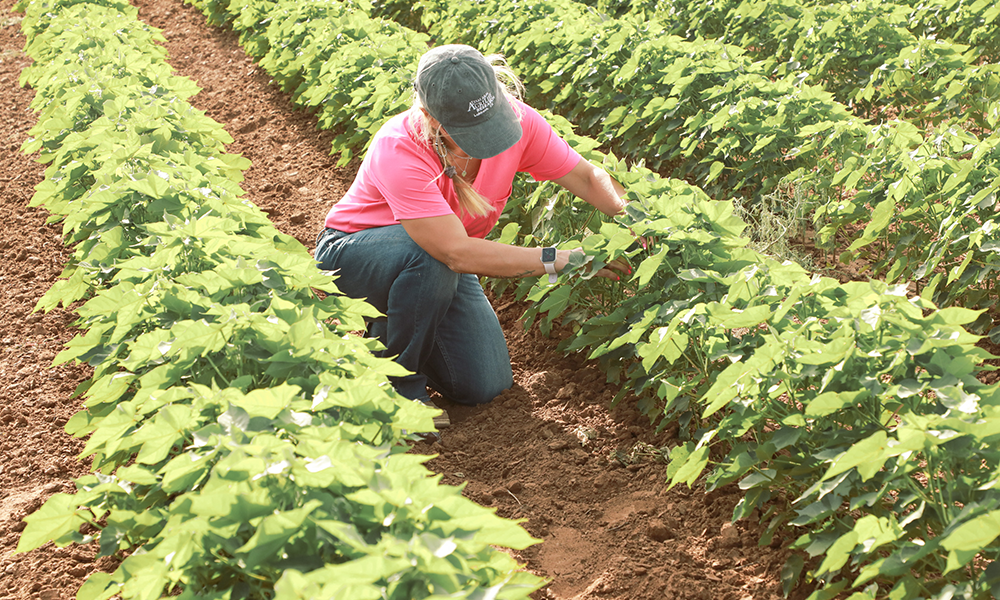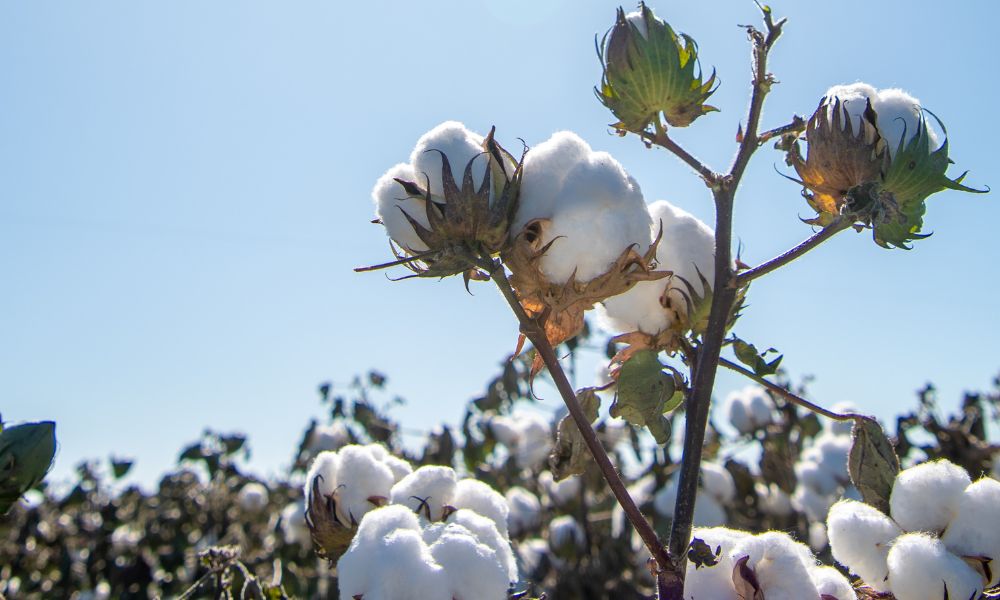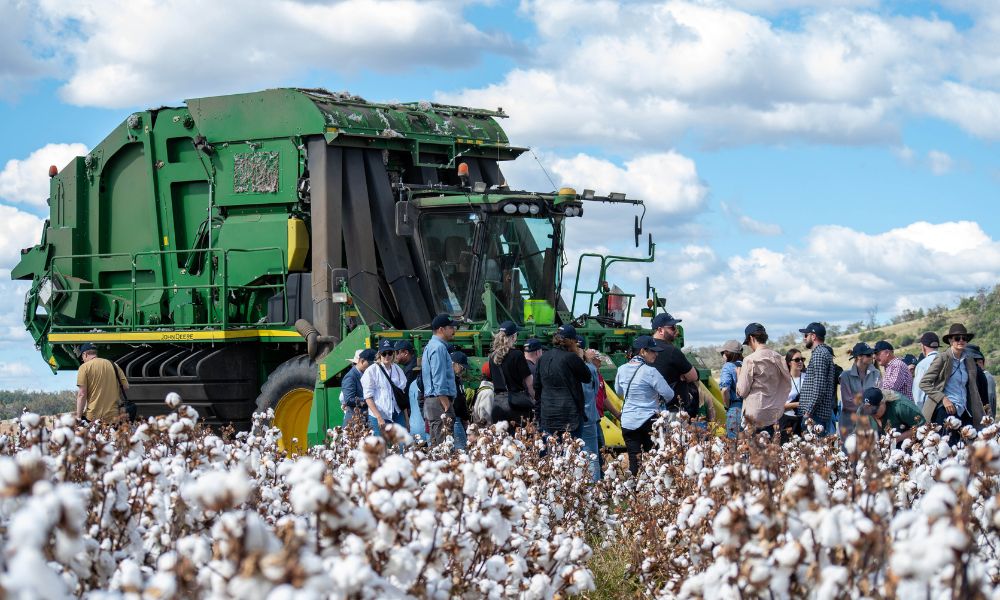Cotton & Water: Demystifying Agricultural Water Management
June 12, 2020
Watch part one of this webinar series to explore water use, consumption, footprint, stress and scarcity
Cotton is one of the most water-resilient crops. Utilizing only 3% of all agricultural water used worldwide, cotton is able to thrive even in water-stressed areas. The U.S. cotton industry aims to continue decreasing overall water use by 18% over 10 years. Thanks to irrigation, water capture, and selection innovations, reaching that goal is within grasp. Learn more by watching the webinar.
The three primary focus areas of agricultural water management designed to create a more sustainable and resilient cotton crop include:
1. Irrigation Optimization
There are multiple ways to deliver water to the cotton crop more efficiently. The cotton industry is most focused on the following:
- Center pivots. Attaching a drag sock to center pivots helps ensure no water is lost during evaporation. Digital center pivots are able to detect and communicate the needs of the cotton plant, which enables farmers to remotely and locally increase water supply when, for example, a cotton plant stops transpiring.
- Irrigation Lines. Burying irrigation lines below the soil surface ensures water is absorbed by the roots immediately.
2. Water Capture
As the global climate continues to transition toward fewer, more intense rainfalls, implementing water capture solutions becomes more important than ever to the future of cotton. The two most common water capture solutions include cover crop programs and farm ponds.
- Cover crops. Planting a cover crop in the off growing season allows the soil to remain supple, and absorbent while increasing the presence of nutrients. The presence of a cover crop in the winter ensures that the soil surface is able to continue absorbing water during rainfalls all year long. Much of the water absorbed remains in the soil near the surface, reserved for when it is needed by the cotton crop later.
- Farm ponds. The use of farm ponds to capture and reserve water has become more popular as rainfall patterns continue to become more intense and less frequent. Many cotton farmers utilize farm ponds to protect their crop during dry seasons because it allows them to create water reserves that can be utilized during droughts.
3. Selection
Cotton Incorporated’s researchers are diligently cultivating the most drought-tolerant cotton crop possible. We utilize digital measurements to find which plants are more drought tolerant and demonstrate the best water use response. One of the ways we are able to discern between plants that are more and less drought-tolerant is by identifying the specimens that can self-cool most efficiently, thus thriving on less water for longer.
The Webinar
This CottonWorks™ webinar is led by Dr. Ed Barnes, Senior Director, Agricultural & Environ-mental Research Division at Cotton Incorporated. Cotton & Water: Demystifying Agricultural Water Management (Part 1) highlights the three industry innovation focus areas integral to continue increasing cotton farming efficiency. Watch the webinar for insights on creating a more sustainable and resilient cotton crop.
In Cotton & Water: Understanding Metrics & Use in Industry Tools (Part 2), you will learn about the following topics:
- Water and life cycle assessment
- How the hydrologic water cycle relates to cotton and agriculture
- Measuring global water scarcity
- Utilizing industry tools such as the Sustainable Apparel Collection (SAC) Higg Index
The work we do is possible because of collaborations with researchers like these and partnerships with people all throughout the value chain. Ready to commit to sustainably produced cotton? Become a Cotton LEADS partner today. Interested in doing even more? Contact us for ideas to get the most out of sustainable cotton and your partnership with Cotton LEADS.















Recent Comments